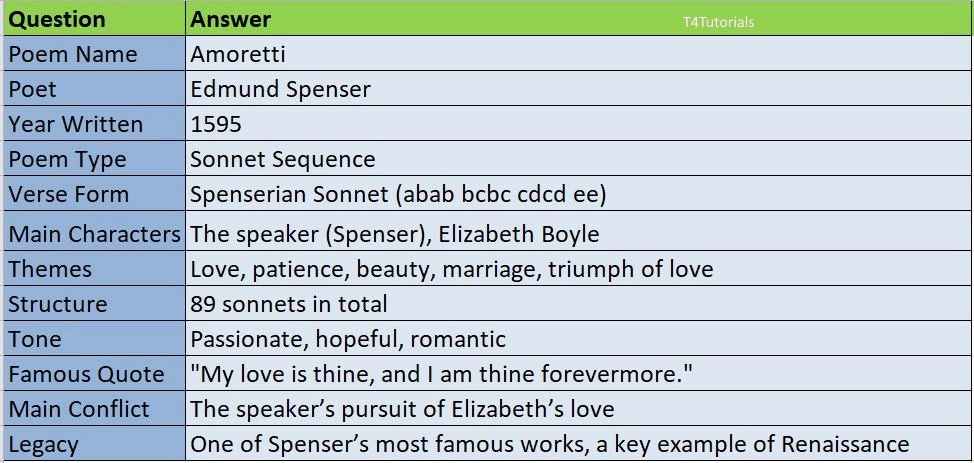Summary:
Amoretti is a sonnet sequence written by Edmund Spenser. It consists of 89 sonnets, written in the traditional Petrarchan style, and it details Spenser’s courtship and eventual marriage to his beloved, Elizabeth Boyle. The sequence captures Spenser’s intense love for Elizabeth, his deep admiration for her beauty, and his yearning for her affection. Throughout the poems, the speaker struggles with his feelings of unrequited love, but he also expresses hope and optimism as he believes that his sincere love will eventually win her over. The sonnets evolve from expressions of longing and passion to the eventual declaration of mutual love and marriage.
The central themes of Amoretti include love, beauty, patience, and the triumph of love over adversity. The sequence begins with the speaker’s internal conflict over whether Elizabeth will return his love, but gradually moves towards a celebration of love’s transformative power, culminating in their marriage. The sonnet sequence is also notable for its use of rich, sensuous language, and it demonstrates Spenser’s mastery of the sonnet form. In addition, Amoretti can be seen as an allegory of the poet’s personal growth in his pursuit of love and his journey toward finding fulfillment.

Score: 0
Attempted: 0/10
Subscribe
| Question | Answer |
| Poem Name | Amoretti |
| Poet | Edmund Spenser |
| Year Written | 1595 |
| Poem Type | Sonnet Sequence |
| Verse Form | Spenserian Sonnet (abab bcbc cdcd ee) |
| Main Characters | The speaker (Spenser), Elizabeth Boyle |
| Themes | Love, patience, beauty, marriage, triumph of love |
| Structure | 89 sonnets in total |
| Tone | Passionate, hopeful, romantic |
| Famous Quote | “My love is thine, and I am thine forevermore.” |
| Main Conflict | The speaker’s pursuit of Elizabeth’s love |
| Legacy | One of Spenser’s most famous works, a key example of Renaissance poetry |